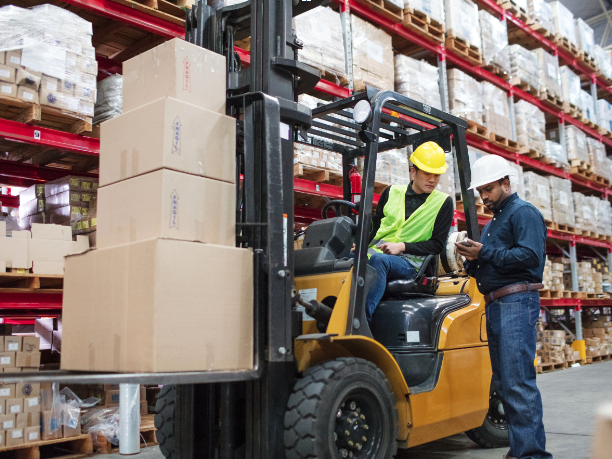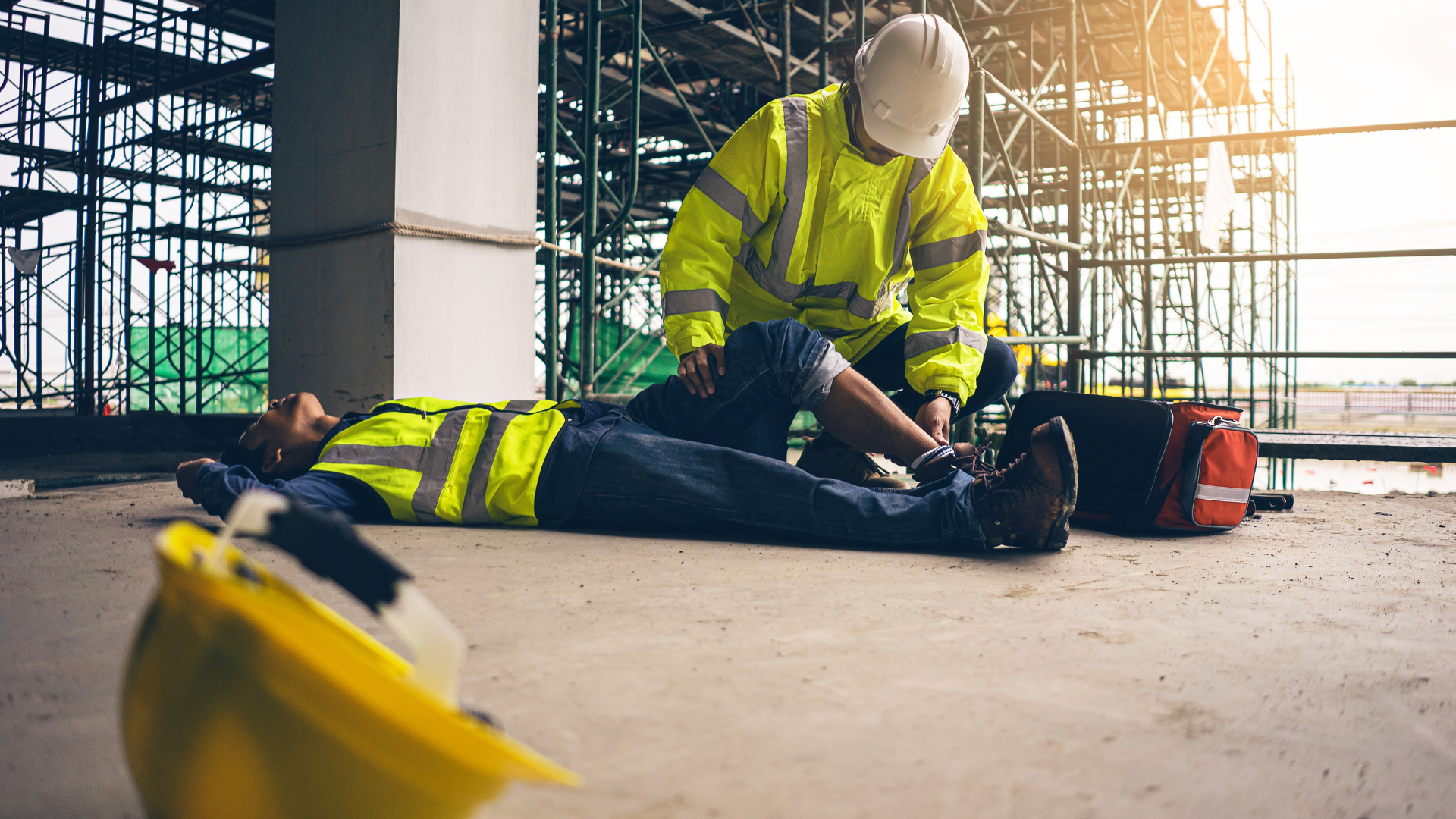SafeDE News
Smarter workplaces are safer workplaces. SafeDE is your resource for OSHA news, regulation changes, recalls, and everything to keep your business safe.
The Fatal Four: The Leading Causes of Death in Construction
Construction workers face many hazards in their day-to-day work. As a matter of fact, this line of work had the second-highest number of work-related fatalities in 2021. According to the Bureau of Labor Statistics (BLS), the construction industry recorded a total of 951 fatalities this year alone.
Given the significant volume of construction activities taking place, it is crucial to understand the multitude of hazards that can endanger construction workers on-site. Among the various types of potential construction accidents, there are four types of accidents that cause the most deaths in this sector.
The “Fatal Four” accounts for a majority of fatalities in construction. This includes falls, struck-by incidents, electrocutions, and being caught-in or -between objects. It is important that we understand how these accidents happen and how we can address these risks to protect the well-being of individuals involved in construction work.
1. Falls
In a 2021 report by the BLS, around one of three construction fatalities were attributed to falls, slips, and trips. Falls from scaffolding, roofs, and ladders account for a significant number of deaths in the construction industry. Falls from machinery, towers, poles, and ground surfaces account for a smaller proportion of these incidents.
As per the Occupational Safety and Health Administration (OSHA) Fall Hazard Recognition, Prevention, and Control Manual, falling incidents can occur due to various factors such as the absence of guardrails, structural support failure, inadequate fall protection measures, and insufficient worker training.
For this reason, OSHA inspectors consider fall prevention a priority in creating training programs. The most common citations for fall-related violations are associated with fall protection, scaffolding, use of ladders, and fall protection training.
To prevent falls, it is important for contractors to do the following:
- Provide the appropriate equipment for working at heights, using lifelines and harnesses when necessary.
- Removing objects and cleaning up spills on the floor to avoid slippery surfaces.
- When placing floor mats, they should be laid down flat and any wrinkles should be smoothed.
- Staircases and walkways should be cleared of any obstructions such as cords, wires, empty boxes, or clutter.
- Using handrails, guardrails, roof edges, and hoists.
- Testing the ladder’s condition to ensure it is stable on a non-slip surface.
- Minimizing the time spent working at elevated heights as much as possible.
These are just some of the measures to help reduce the risk of falls and promote a safer working environment.
2. Struck-by
In a recent report by the Center for Construction Research and Training (CPWR) , an estimated 17% of construction-related deaths are attributed to incidents involving swinging, falling, rolling, or misplaced objects. These incidents involve falling objects caused by rigging failure, loose or shifting materials, equipment malfunctions, and collisions with vehicles or machinery. Struck-by accidents in construction can also occur from working near heavy machinery, trenching or excavation cave-ins, and collapsing buildings.
To minimize the risk of workers being struck by these hazards, the CPWR recommends several practices to reduce the likelihood of struck-by incidents among construction workers. These practices include:
- Wearing appropriate personal protective equipment (PPE) such as safety glasses, hard hats, and face shields.
- Wearing a utility work belt to securely attach small tools and prevent accidental drops.
- Refrain from working beneath loads during lifting operations and maintain a safe distance until the load has been properly stabilized or removed.
- Using rope, tape, lines, and physical barriers to mark restricted areas.
- Inspecting and calibrating tools before use.
- Using nail guns with sequential triggers instead of contact triggers to minimize the risk of unintended firing.
Implementing these practices plays a vital role in creating a safer work environment and ensuring the protection of construction workers against struck-by incidents.
3. Electrocutions
Electrocution incidents can arise from various factors, including the improper use of extension and flexible cords and contact with overhead power lines. During maintenance and repairs, construction workers come in contact with energized conductors, circuits, exposed wiring, defective power tools, and other electrically charged sources.
To enhance protection against these hazards, it is crucial to implement certain safety practices. This includes:
- Utilizing lockout/tagout procedures to effectively control the electrical energy sources.
- Never leaving exposed energized conductors or circuit parts unattended.
- Locating and identify utilities, both overhead and underground, to avoid potential contact.
- Being vigilant when operating equipment that may come into contact with overhead power lines.
- Maintaining a safe distance from power lines is vital, and it is important to be aware of the recommended safe distance requirements.
- Only operating portable electric tools if they are grounded or double-insulated for added safety.
- Utilizing ground-fault circuit-interrupters (GFCIs) for protection, as they are required for all maintenance and construction work.
By adhering to these safety measures, the risks of electrocution can be significantly reduced, promoting a safer work environment for everyone involved.
4. Caught in or between
Caught-in and caught-between injuries occur when a worker becomes trapped or compressed between objects. These incidents often arise due to inadequate safeguards in equipment, trench collapses, and the tipping over of unstable machinery.
To minimize the occurrence of caught-in and caught-between incidents on construction sites, it is important to adhere to these precautionary measures:
- When working above ground level, it is essential to secure any hoisting support to prevent accidents.
- In trenches and excavations deeper than 5 feet, protective systems such as shoring, trench shields, benching, and sloping should be employed to ensure worker safety.
- Regular meetings and unannounced inspections should be conducted to identify any instances of improper equipment usage, unsupervised operations, or non-compliance with safety measures.
By implementing these precautionary measures, the risk of caught-in and caught-between incidents can be significantly reduced, creating a safer working environment for all.
Other Causes of Death
In addition to the "Fatal Four" causes of construction fatalities, there are other accidents that contribute to deaths in the construction industry. Some of them are respiratory hazards, heat-related illnesses, machinery accidents, and structural collapses. Although less frequent, construction deaths can also result from fires and explosions, exposure to toxic chemicals, and highway accidents.
Bottomline
In the construction industry, the "Fatal Four" causes of death continue to pose significant risks to workers. These four leading causes of death in construction include falls, struck-by incidents, electrocutions, and caught-in or -between incidents. By implementing proper safety measures, these fatalities can be avoided.
To ensure the safety and well-being of construction workers, comprehensive safety measures, strict adherence to regulations, and continuous training are essential. By addressing the "Fatal Four" and taking preventive measures against other potential dangers, the construction industry can work towards creating a safer work environment and reducing the occurrence of tragic incidents.
Get SafeDE News
Workplace safety for all businesses.
SafeDE provides FREE comprehensive onsite surveys for small and medium sized private sector establishments to identify potential workplace hazards, improve safety and health management systems, and assist in voluntary compliance with federal OSHA regulations.
Related News

20 Tips for Safe Forklift Operation | Expert Advice
-1.png)
Committed to Safety: What is It & Why It Matters
-1.png)
Workplace Safety Tips: Protect Yourself with PPE and More

Your Complete Guide to Workplace Health and Safety During Halloween
-1.png)
5 Essential Workplace Fire Safety Tips to Prevent Fires
.png)
Behavior-Based Safety Programs: A Complete Guide
-1.png)
10 Electrical Safety Precautions for Injury Prevention

Basic First Aid Tips for Workplace Safety
-2.png)



